Closely related type II-C Cas9 orthologs recognize diverse PAMs
- PMID: 35959889
- PMCID: PMC9433092
- DOI: 10.7554/eLife.77825
Closely related type II-C Cas9 orthologs recognize diverse PAMs
Abstract
The RNA-guided CRISPR/Cas9 system is a powerful tool for genome editing, but its targeting scope is limited by the protospacer-adjacent motif (PAM). To expand the target scope, it is crucial to develop a CRISPR toolbox capable of recognizing multiple PAMs. Here, using a GFP-activation assay, we tested the activities of 29 type II-C orthologs closely related to Nme1Cas9, 25 of which are active in human cells. These orthologs recognize diverse PAMs with variable length and nucleotide preference, including purine-rich, pyrimidine-rich, and mixed purine and pyrimidine PAMs. We characterized in depth the activity and specificity of Nsp2Cas9. We also generated a chimeric Cas9 nuclease that recognizes a simple N4C PAM, representing the most relaxed PAM preference for compact Cas9s to date. These Cas9 nucleases significantly enhance our ability to perform allele-specific genome editing.
Keywords: CRISPR/Cas9; Nme1Cas9 orthologs; Nsp2Cas9; PAM diversity; crispr/cas9; genetics; genome editing; genomics; nme1cas9 orthologs; nsp2cas9; pam diversity.
© 2022, Wei et al.
Conflict of interest statement
JW, LH, JL, ZW, TQ, SG, SS No competing interests declared, SG, YW author on patent application number 202110878452X, "Cas9 protein, gene editing system containing Cas9 protein and application"; this patent relates to the technical field of gene editing, and specifically designs a CRISPR/Cas9 gene editing system and its application
Figures

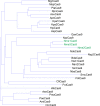
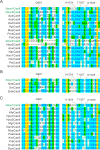

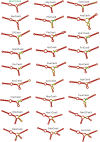
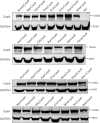
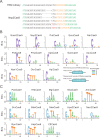


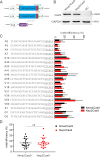

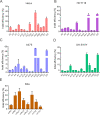





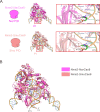

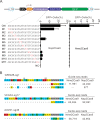
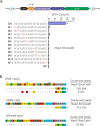
Similar articles
-
Expanding the scope of CRISPR/Cas9-mediated genome editing in plants using an xCas9 and Cas9-NG hybrid.J Integr Plant Biol. 2020 Apr;62(4):398-402. doi: 10.1111/jipb.12886. Epub 2020 Jan 9. J Integr Plant Biol. 2020. PMID: 31702097
-
Characterization of diverse Cas9 orthologs for genome and epigenome editing.Proc Natl Acad Sci U S A. 2025 Mar 18;122(11):e2417674122. doi: 10.1073/pnas.2417674122. Epub 2025 Mar 12. Proc Natl Acad Sci U S A. 2025. PMID: 40073054 Free PMC article.
-
Improving Plant Genome Editing with High-Fidelity xCas9 and Non-canonical PAM-Targeting Cas9-NG.Mol Plant. 2019 Jul 1;12(7):1027-1036. doi: 10.1016/j.molp.2019.03.011. Epub 2019 Mar 27. Mol Plant. 2019. PMID: 30928637
-
CRISPR technologies and the search for the PAM-free nuclease.Nat Commun. 2021 Jan 22;12(1):555. doi: 10.1038/s41467-020-20633-y. Nat Commun. 2021. PMID: 33483498 Free PMC article. Review.
-
Harnessing the natural diversity and in vitro evolution of Cas9 to expand the genome editing toolbox.Curr Opin Microbiol. 2017 Jun;37:88-94. doi: 10.1016/j.mib.2017.05.009. Epub 2017 Jun 20. Curr Opin Microbiol. 2017. PMID: 28645099 Review.
Cited by
-
Rational Design of Enhanced Nme2Cas9 and Nme2SmuCas9 Nucleases and Base Editors.bioRxiv [Preprint]. 2024 Nov 7:2024.10.30.620986. doi: 10.1101/2024.10.30.620986. bioRxiv. 2024. PMID: 39554198 Free PMC article. Preprint.
-
Engineering a Streptococcus Cas9 Ortholog with an RxQ PAM-Binding Motif for PAM-Free Gene Control in Bacteria.ACS Synth Biol. 2023 Sep 15;12(9):2764-2772. doi: 10.1021/acssynbio.3c00366. Epub 2023 Aug 29. ACS Synth Biol. 2023. PMID: 37643152 Free PMC article.
-
Engineering of a high-fidelity Cas12a nuclease variant capable of allele-specific editing.PLoS Biol. 2024 Jun 12;22(6):e3002680. doi: 10.1371/journal.pbio.3002680. eCollection 2024 Jun. PLoS Biol. 2024. PMID: 38865309 Free PMC article.
-
Discovery and engineering of Tsp2Cas9 for genome editing.Cell Discov. 2024 May 21;10(1):55. doi: 10.1038/s41421-024-00685-w. Cell Discov. 2024. PMID: 38769322 Free PMC article. No abstract available.
-
Computational design of novel Cas9 PAM-interacting domains using evolution-based modelling and structural quality assessment.PLoS Comput Biol. 2023 Nov 17;19(11):e1011621. doi: 10.1371/journal.pcbi.1011621. eCollection 2023 Nov. PLoS Comput Biol. 2023. PMID: 37976326 Free PMC article.
References
-
- Agudelo D, Carter S, Velimirovic M, Duringer A, Rivest J-F, Levesque S, Loehr J, Mouchiroud M, Cyr D, Waters PJ, Laplante M, Moineau S, Goulet A, Doyon Y. Versatile and robust genome editing with streptococcus thermophilus CRISPR1-cas9. Genome Research. 2020;30:107–117. doi: 10.1101/gr.255414.119. - DOI - PMC - PubMed
Publication types
MeSH terms
Substances
LinkOut - more resources
Full Text Sources
Molecular Biology Databases
Research Materials
Miscellaneous

